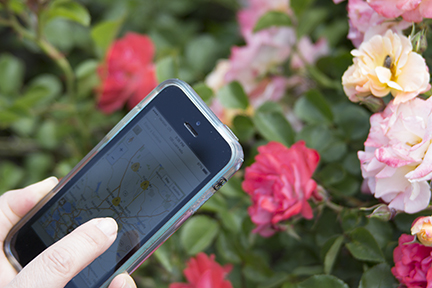Posts Tagged: butterflies
To bee or not to bee depends on the crop
Bees do it. Birds do it. Even bats do it. They all help plants reproduce by carrying pollen from one flower to another. Beetles, butterflies, wasps, flies and moths are also pollinators.
About 35 percent of the food we eat depends on the assistance of bees to pollinate plants and trees so they will produce fruit, nuts or vegetables. It takes 1.6 million colonies of honey bees to pollinate California's 800,000 acres of almond trees.
Our food choices would be dramatically reduced if bees weren't around to pollinate. To illustrate what the produce section of a grocery store would look like in a world without bees, Whole Foods Market removed the products that depend on pollination from one of its stores and took a photo. See the difference: http://ucanr.tumblr.com/post/84164840510/kqedscience-whole-foods-shows-customers-the. Without bees, more than half the fruits and vegetables were eliminated.
Honey bees and other pollinators are being threatened by the drought, disease, mites, loss of habitat and food sources, according to Eric Mussen, UC Cooperative Extension specialist in the Department of Entomology at UC Davis and bee expert.
But not everyone wants help from pollinators. To produce seedless fruit, some citrus growers cover their mandarin trees to keep out bees because the mandarins, or tangerines, produce seeds if the tree is pollinated. Most consumers prefer their mandarins to be seedless.
Beth Grafton-Cardwell, UC Cooperative Extension specialist in the Department of Entomology at UC Riverside and director of Lindcove Research and Extension Center, talks about the role of pollinators in California agriculture in this video: http://www.youtube.com/watch?v=8suOt5PnzWc&feature=youtu.be.
To see photos of different kinds of pollinators and to learn more about how to help them thrive, visit our pollinator page. On May 8, help count the pollinators in your community and add them to the map at http://beascientist.ucanr.edu.



